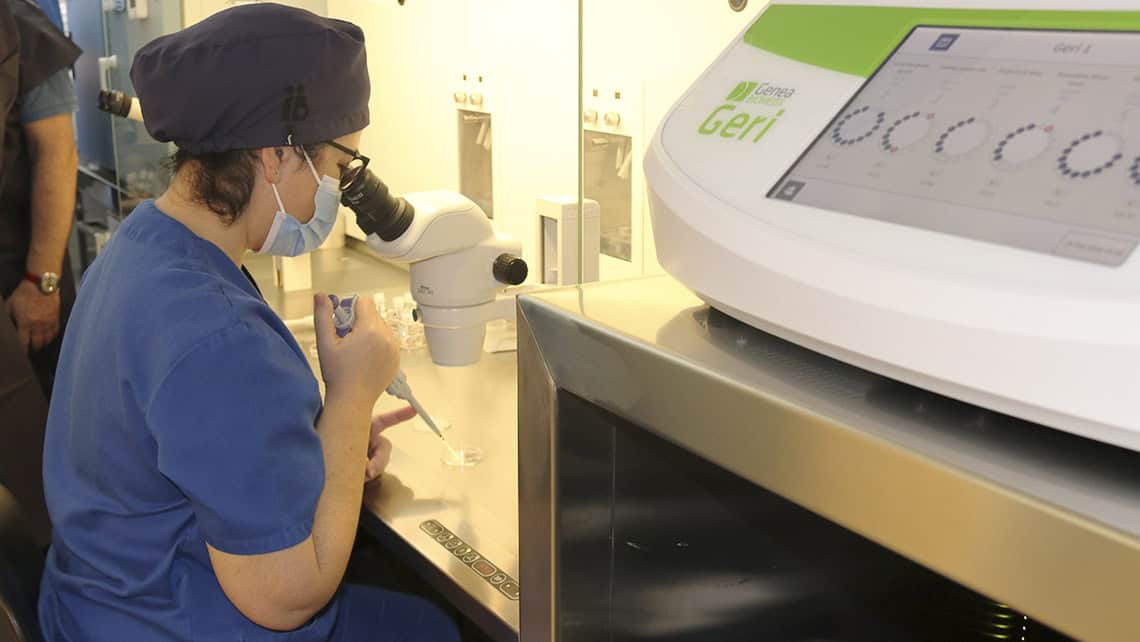
This is how Instituto Bernabeu’s quality embryo selection process works.
Índice
What is embryo selection?
For decades, the aim has been to optimise assisted reproduction treatments, obtaining an adequate number of embryos for the patient without compromising her health. Obtaining more than one embryo per ovarian stimulation facilitates the possibility of performing several transfers with a single stimulation, but also leads to having to decide which is the most suitable embryo to transfer.
This decision is known as embryo selection, which involves evaluating the quality of the embryo in terms of morphological and cell division parameters (embryo kinetics). The embryo with the best quality and kinetics will be selected for transfer or cryopreservation.
How is the best embryo selection made?
Embryo selection has evolved over the years, as have in vitro fertilisation (IVF) techniques and fertility treatments. Improvements in culture conditions and advances in molecular biology have contributed to more accurate embryo selection.
Currently, embryos are kept in culture for several days in time-lapse incubators. These make it possible to evaluate both the morphology and the division kinetics of the embryo. The information obtained is sufficient to select the best embryo for transfer and to keep surplus embryos as frozen embryos.
In some cases, artificial intelligence software is used to analyse the data collected using algorithms to select the best quality embryo. Morphokinetics provides information on the external development of the embryo, but there are genetic selection techniques (genetic screening) that allow the analysis of the inside of the embryo. These techniques, such as pre-implantation genetic diagnosis (PGD or PGT), analyse chromosomes and/or genes to identify possible alterations that may cause implantation failure or genetic diseases.
PGT techniques require biopsy of the embryo, usually at the blastocyst stage, which implies the conservation of embryos (cryopreservation) until the diagnosis is obtained. However, non-invasive PGT techniques are being developed to analyse embryonic DNA in the culture medium.
Pros and cons of embryo selection
Embryo selection is a process that requires experience on the part of the embryology team. Although finding good quality embryos is positive, it can be difficult to determine which embryos have the greatest implantation potential. Morphological assessment is subjective and depends on the skill of the team.
To reduce subjectivity, algorithms have been developed to evaluate morphological characteristics and embryo divisions. Artificial intelligence has made it possible to integrate this information into software that ranks embryos from best to worst quality in an objective manner.
Regardless of the method used, the main objective still is the birth of a healthy child.
Dr Dori Rodríguez (associate no. 02287-CV), biologist and embryologist at Instituto Bernabeu
